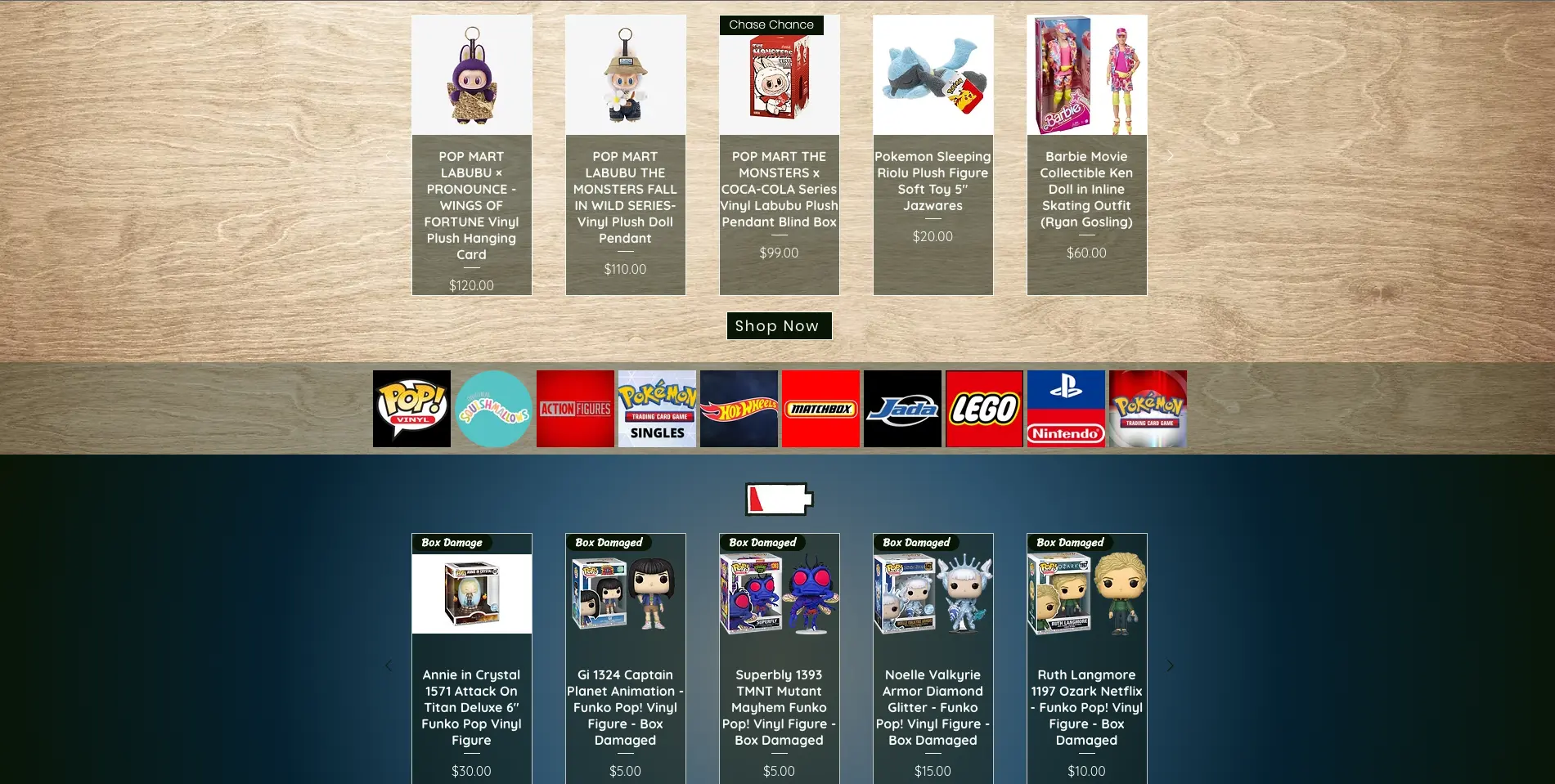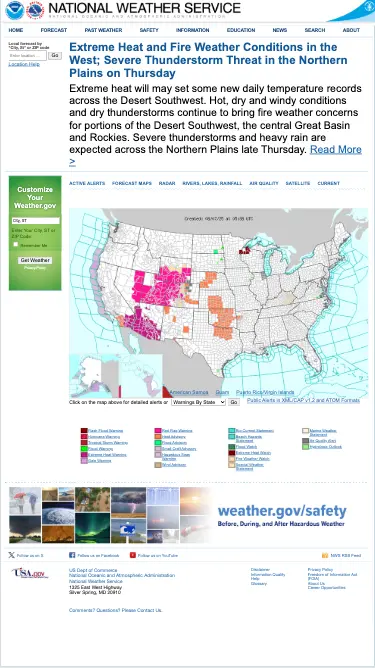G'day! I've seen this story play out hundreds of times across Australian businesses. Business owner invests $15,000 in inventory, spends weeks setting up their Shopify store, launches with excitement... and gets zero sales. Three months later, they're staring at their analytics wondering what went wrong. Here's the brutal truth: your store looks identical to every other template-based disaster flooding the internet. You're using the same Dawn theme that 2.3 million other stores use, the same layout structure, the same everything. Why would customers choose you over the identical store they just visited? The problem isn't your products, pricing, or even marketing budget. It's that you've created a digital clone instead of a brand. Whether you're selling premium skincare or handmade jewellery, your store's design should reflect your brand's unique position in the market. Instead, most Shopify stores commit the cardinal sin of treating luxury products like discount items and overwhelming customers with information when they need simplicity. This guide reveals why generic templates kill conversions and how understanding design psychology for your specific niche can transform your store from another lookalike into a sales machine that customers actually trust and buy from.
The Template Trap: Why Looking Like Everyone Else Kills Sales

Let's start with the harsh reality: your customers have seen your exact store design hundreds of times before. They just don't realise it consciously, but their subconscious brain is screaming 'I've seen this before, it's generic, I don't trust it.'
Shopify's Dawn theme powers over 2.3 million stores according to their own statistics. Brooklyn theme? Another 1.8 million. When you use these popular templates, you're not creating a unique brand experience, you're joining a massive crowd of identical storefronts. Imagine walking through a shopping centre where every single store had identical layouts, identical signage, and identical displays. You'd feel like you were in some weird simulation, right?
The psychology behind this is devastating for conversion rates. When customers encounter familiar layouts and design patterns, they unconsciously categorise your store as 'generic' within 0.05 seconds of landing on your page. This instant categorisation affects every subsequent interaction. Generic equals untrustworthy in the customer's mind, especially when they're considering spending their hard-earned money.
Here's what actually happens when someone visits your template-based store: They land on your homepage, see the familiar layout they've encountered on dozens of other sites, and immediately start looking for reasons NOT to buy. Their guard goes up because template sites often signal dropshipping operations or businesses that don't invest in their brand. Trust signals become even more critical when your design already looks like everyone else's.
The conversion killer is choice paralysis combined with template fatigue. When customers can't differentiate between stores based on design and experience, they default to price comparison. Template stores almost always end up competing on price instead of value, which destroys profit margins and makes building a sustainable business nearly impossible.
Niche Psychology: Why One Size Fits None

Here's where most Shopify store owners go completely wrong: they assume that what works for Amazon or other massive retailers will work for their niche business. This assumption destroys more online stores than any other single factor.
Different product categories require completely different psychological approaches. A luxury skincare brand and a discount electronics store should NEVER use the same design strategy, yet most Shopify templates treat them identically. This is like using the same sales approach to sell Ferraris and Honda Civics. Fundamentally misunderstanding your customer's mindset.
Luxury and premium brands require minimalist, sophisticated design that creates desire through scarcity and exclusivity. Think about how Saint Laurent, Gucci, or Tom Ford present their products online. Clean layouts, lots of white space, minimal text, focus on product imagery. They're not shouting about features or overwhelming you with information, they're creating an atmosphere of exclusivity and quality.
But here's what happens with Shopify templates: luxury brands end up with busy layouts, multiple call-to-action buttons, review widgets everywhere, and information overload that destroys the premium positioning they've worked to create. A $200 skincare product presented like a $20 product will perform like a $20 product, regardless of its actual quality.
Mass market and value-focused brands need different psychology entirely. These customers want information, comparisons, social proof, and reassurance about their purchase decision. They need to see features, benefits, reviews, and clear value propositions. The same minimalist approach that works for luxury kills conversions for value brands.
The fundamental problem: Shopify templates are designed for broad appeal, which means they optimise for nothing specific and fail at everything. Your niche has specific psychological triggers, pain points, and purchase motivations that generic templates completely ignore.
The Information Overload Death Spiral
Most failing Shopify stores suffer from digital hoarding disorder. Store owners think more information equals more sales, so they cram every possible detail, feature, benefit, and widget onto their pages. This approach obliterates conversion rates faster than a pricing mistake.
Here's the brutal psychology truth: every additional piece of information you add to your store decreases the likelihood that customers will make a decision. This is called decision paralysis, and it's conversion cancer. When customers feel overwhelmed by choices or information, they choose nothing.

The worst offenders include: product pages with 47 different product images, descriptions longer than university essays, seventeen different trust badges cluttering the header, pop-ups for email signup competing with pop-ups for discount codes, and navigation menus with more options than a restaurant in Times Square. Each element fights for attention, creating visual chaos that sends customers running.
Professional stores understand the power of strategic omission. What you don't show is often more important than what you do show. Apple doesn't list every technical specification on their product pages. They focus on the core benefits that drive purchase decisions and hide complex details in separate sections for customers who specifically want them.
The conversion-killing combination: information overload plus template design plus inexperience with consumer psychology creates stores that repel customers instead of attracting them. Customers sense the amateur approach subconsciously and lose confidence in the brand before they even see the products.
The fix requires understanding your customer's decision-making process and providing exactly the right information at exactly the right time. Too little information creates uncertainty. Too much information creates overwhelm. Both kill sales.
Trust Signals: Why Your Store Feels Sketchy
Trust is the foundation of online sales, yet most Shopify stores accidentally signal that they're untrustworthy through design choices and missing elements. Customers need to feel safe before they'll enter their credit card information, and template stores often fail this basic requirement.
The trust equation includes multiple components: visual professionalism, social proof, security indicators, clear policies, and human connection. Most template stores get maybe two of these elements right, leaving massive gaps that customers notice subconsciously.
Visual professionalism starts with design consistency and quality. Template stores often mix fonts, colours, and styling in ways that signal amateur operation. Professional brands maintain strict visual consistency across every element of their store. Inconsistent design triggers trust alarms in customers' minds.
Social proof requires strategic implementation, not just review widgets. Authentic customer testimonials with photos, user-generated content, case studies, and social media integration build trust more effectively than generic five-star review displays. Most template stores use fake-looking review sections that actually decrease trust rather than building it.
The human connection element is almost always missing from template stores. Customers want to know who they're buying from, especially for higher-ticket items or products they put on their body. An about page with real photos, founder story, and company mission creates emotional connection that drives purchase decisions.
Security indicators go beyond SSL certificates. Clear return policies, shipping information, customer service contact details, and privacy policies need to be easily accessible. Template stores often bury this information or make it difficult to find, creating uncertainty that kills conversions.
The Urgency and Scarcity Science
Most Shopify stores completely ignore the psychological triggers that actually drive purchase decisions. Urgency and scarcity aren't marketing tricks, they're fundamental aspects of human decision-making psychology that successful stores leverage strategically.
Here's the psychology behind urgency: humans are loss-averse, meaning we hate losing opportunities more than we enjoy gaining them. When customers believe they might miss out on something valuable, their decision-making shifts from analytical to emotional. Emotional decisions happen faster and more frequently than analytical ones.
Authentic urgency works because it's true. Limited inventory, seasonal availability, launch windows, and genuine deadlines create real reasons for customers to act now instead of later. Fake countdown timers and made-up scarcity destroy trust when customers discover the deception.
Strategic scarcity implementation means showing inventory levels for high-demand items, highlighting limited edition products, and creating exclusive access for certain customer segments. 'Only 3 left in stock' converts better than unlimited availability because it triggers loss aversion psychology.
Most template stores either ignore urgency completely or implement it so poorly that it looks fake. Real urgency requires strategic planning and authentic reasons for time-sensitive decisions. Customers can sense authentic urgency versus manufactured pressure, and they respond very differently to each.
The conversion impact is massive: stores with strategic urgency and scarcity typically see 15-40% higher conversion rates compared to stores without these elements. The key is authenticity and strategic implementation rather than aggressive pressure tactics.
Mobile Experience: Where Most Stores Die

Over 70% of ecommerce traffic comes from mobile devices, yet most Shopify stores provide mobile experiences that actively discourage purchases. Template responsiveness doesn't equal mobile optimisation, and this misunderstanding costs stores thousands in lost sales.
Mobile shoppers have different psychology than desktop users. They're often browsing during downtime, have shorter attention spans, and need streamlined experiences that get them to purchase decisions quickly. Desktop-first design shrunk down to mobile creates friction that mobile users won't tolerate.
The biggest mobile conversion killers include: tiny buttons that require precision tapping, forms that don't work with mobile keyboards, images that don't load properly, and navigation that requires zooming. Every friction point on mobile eliminates customers who won't struggle with poor user experience.
Page load speed becomes critical on mobile because mobile users expect instant gratification. Anything over 3 seconds loses 40% of mobile visitors before they even see your products. Template stores often load slowly due to excessive apps and unoptimised images, creating immediate abandonment.
Mobile checkout optimisation separates winning stores from failing ones. Guest checkout, autofill capabilities, mobile payment options like Apple Pay and Google Pay, and streamlined forms reduce mobile abandonment significantly. Template stores often force mobile users through desktop-designed checkout flows that create unnecessary friction.
Mobile-first design thinking means designing for thumb navigation, single-column layouts, larger touch targets, and simplified information hierarchy. Most template stores treat mobile as an afterthought, resulting in experiences that frustrate customers and drive them to competitors.
Case Study: The $64k Monthly Transformation
Let me share a real transformation that illustrates these principles in action. A premium Australian yarn company came to us doing $2,000 monthly in sales after eight months of operation. Beautiful products, great margins, zero sales momentum.
The problem was immediately obvious: they were using a standard Shopify template with mass-market presentation for $45-180 premium yarn products.
Their beautiful artisan yarns were being presented like discount craft supplies. This positioning mismatch created immediate customer confusion, the quality justified premium pricing, but the presentation suggested bargain-bin products.
.webp)
The transformation required a complete rebuild from scratch using custom code. We threw out their template entirely and built a store that emphasised what actually mattered to their customers: Australian-made quality, artisan craftsmanship, and the trust that comes from buying locally. Using frameworks we've developed over 20 years of experience, we created a store that felt personal, credible, and unmistakably Australian.
The results were immediate and dramatic. Month one post-launch: $8,000 in sales. Month three: $22,000. Month six: $64,000 monthly revenue. Same products, same prices, same target market. The only change was a custom-built store that positioned their yarn as premium Australian craftsmanship rather than just another hobby product.
The key insight: craft customers don't just want yarn, they want to feel connected to the artisan story and trust the quality of what they're creating with. Our custom development emphasised the founder's expertise, Australian sourcing, and the care that goes into each product. Instead of competing with mass-market yarn suppliers, we positioned them as the premium Australian alternative.
This transformation illustrates why custom development beats template modifications every time. When you understand your specific market psychology and build accordingly, you create experiences that templates simply cannot deliver. Twenty years of experience means we know what actually converts rather than following generic ecommerce advice.
The Real Cost of Template Mediocrity
Let's talk about what template mediocrity actually costs your business beyond just lost sales. The hidden costs compound over time and often exceed the investment required for proper custom design.
Opportunity cost represents the biggest hidden expense. Every day your store converts at 0.8% instead of 3.5% is revenue permanently lost. A store doing $50,000 monthly with poor conversion rates could be doing $200,000+ with proper optimisation. That's $150,000 monthly in lost opportunity.
Customer acquisition costs increase when conversion rates are low. If your store converts poorly, you need four times as much traffic to achieve the same sales. This makes advertising more expensive and growth more difficult than it should be.
Brand perception damage affects long-term growth. Customers who have poor experiences rarely return and often share negative impressions. Template stores create forgettable or negative first impressions that hurt word-of-mouth marketing and repeat business.
Competitive disadvantage compounds over time. While you're struggling with template limitations, competitors with proper design are capturing market share. Playing catch-up becomes more expensive than doing it right initially.
The maths is clear: investing $15,000-30,000 in proper store design pays for itself within months through improved conversion rates, while template mediocrity costs hundreds of thousands in lost revenue over time.
Understanding Australian Consumer Behaviour
Australian consumers have specific expectations and behaviours that affect online shopping decisions. Understanding these patterns helps optimise stores for the local market.
Trust signals matter more for Australian consumers who are naturally sceptical of online purchases from unknown brands. Clear shipping information, local contact details, and Australian Business Number display build confidence that overseas template stores often miss.
Payment preferences include Afterpay integration, which has become essential for many product categories. Australian consumers expect buy-now-pay-later options, and stores without these payment methods lose sales to competitors who offer them.
Shipping expectations are higher in Australia due to distance and delivery challenges. Clear delivery timeframes, tracking information, and reasonable shipping costs need prominent display. Hidden shipping costs at checkout kill conversions faster than poor design.
Local social proof carries more weight than international testimonials. Australian customers trust reviews and testimonials from other Australians more than generic international feedback. Location-specific social proof builds stronger conversion psychology.
Moving Beyond Template Limitations
Understanding the problems is only valuable if you know how to solve them. Moving beyond template limitations requires strategic thinking about your specific market, customers, and positioning.
Custom design doesn't necessarily mean building from scratch. Strategic customisation of existing platforms can provide the benefits of unique positioning while maintaining platform advantages like payment processing and inventory management.
The key is understanding your specific requirements rather than accepting generic solutions. Your industry, target market, price points, and business model should drive design decisions rather than following template constraints.
Professional design strategy starts with customer psychology research for your specific niche. What motivates your customers? What concerns do they have? How do they make purchase decisions? Design should reinforce positive psychology and address negative concerns.
Performance optimisation, conversion psychology, and technical excellence create stores that consistently outperform template-based competitors. The investment pays for itself through improved conversion rates and customer experience.
The goal isn't just a better-looking store, it's a store that actually serves your business objectives through strategic design, conversion optimisation, and customer experience that builds long-term success.
Taking Action: Your Next Steps
Understanding these problems is worthless without action. Your store is losing money every day it continues with template mediocrity and generic positioning. The question isn't whether you can afford to invest in proper design, it's whether you can afford not to.
Start by auditing your current store against the criteria discussed in this guide. Does your design match your positioning? Are you creating trust or confusion? Does your mobile experience help or hurt conversions? Honest assessment reveals the biggest opportunities for improvement.
Prioritise changes based on impact potential. Conversion rate optimisation typically provides the highest ROI because improvements affect every visitor. Technical performance optimisation comes next, followed by strategic design improvements.
Professional consultation can save months of trial and error by identifying specific problems and solutions for your situation. Experienced developers and designers understand niche psychology and can implement solutions that address your specific challenges.
The best time to fix your store was before you launched it. The second-best time is now. Every day you delay optimisation is another day your competitors steal market share with superior customer experiences and conversion rates.
Your business deserves a store that works as hard as you do to attract customers, build trust, and drive sales. Stop accepting template mediocrity and start building the store your products and customers deserve.

